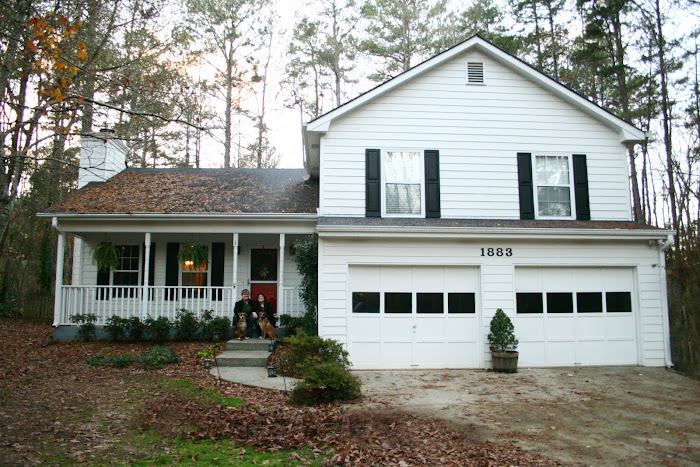one of the biggest issues we've faced at mckinky manor is the septic tank. it failed on us about a month after we moved in, and started backing up into the basement. we hired a company to come out and pump it and see if they could fix it. long story short, we paid $1400 for the to pump it and tell us we'd have to get a permit and do a complete rework of our septic system. awesome.
so we went to get the $250 permit, and they told us to get a $300 soil test. for those of you keeping score at home, at this point we're up to almost $2000 and still haven't started work on the actual solution. to make matters worse, the soil test came back with the equivalent of straight f's on our land's report card. they say that none of our land is any good for septic. why they built here in the first place with no usable soil is another story for another day and doesn't help us out one bit today.
so...the soil test guy gave us a few options to send around to septic contractors to get quotes on. we did so, and the lowest price we got was $11,400. that's before disposal fees, and electrician costs. so, we're looking at 13,350 total. fast forward three months and the gwinnett county environmental health department has denied every single plan our contractors have submitted for one reason or another, so even if we had the time and money to devote to this thing, we'd still be held up by them. to top it all off, they had the audacity to suggest that we get another $300 soil test just in case the ground changed significantly during the 3 months worth of foot dragging and lolly gagging they were doing.
on top of all that, we have major drainage issues in our yard. the soil is constantly soaked because of the heavy rainfall we've had lately, and the water from the entire neighborhood flows to a retention pond adjacent to our property which is fed directly by a creek running along our property line. the pond and creek have overflowed and crept up several feet, which of course, raises the water table in our yard (one of the obstacles to getting work approved.)
drainage issues in our yard...
1.) the beginning of that glorious creek. that pipe is never supposed to have standing water in it...it's about 3 feet deep at this point.

2.) this is supposed to be more or less dry, at most a trickle. notice the trees growing out of the water? ya, they're actually not supposed to be in the water at all.

3.) one of the many sources of groundwater moving (and i use the term lightly...) directly across our property
 4.) and here you see the water moving across our driveway. this is after a relatively light rain. it's a few feet wide when it pours, which it has been doing a lot lately.
4.) and here you see the water moving across our driveway. this is after a relatively light rain. it's a few feet wide when it pours, which it has been doing a lot lately. 5.) as you can see...
5.) as you can see...
to be continued...(cue tense music)














































